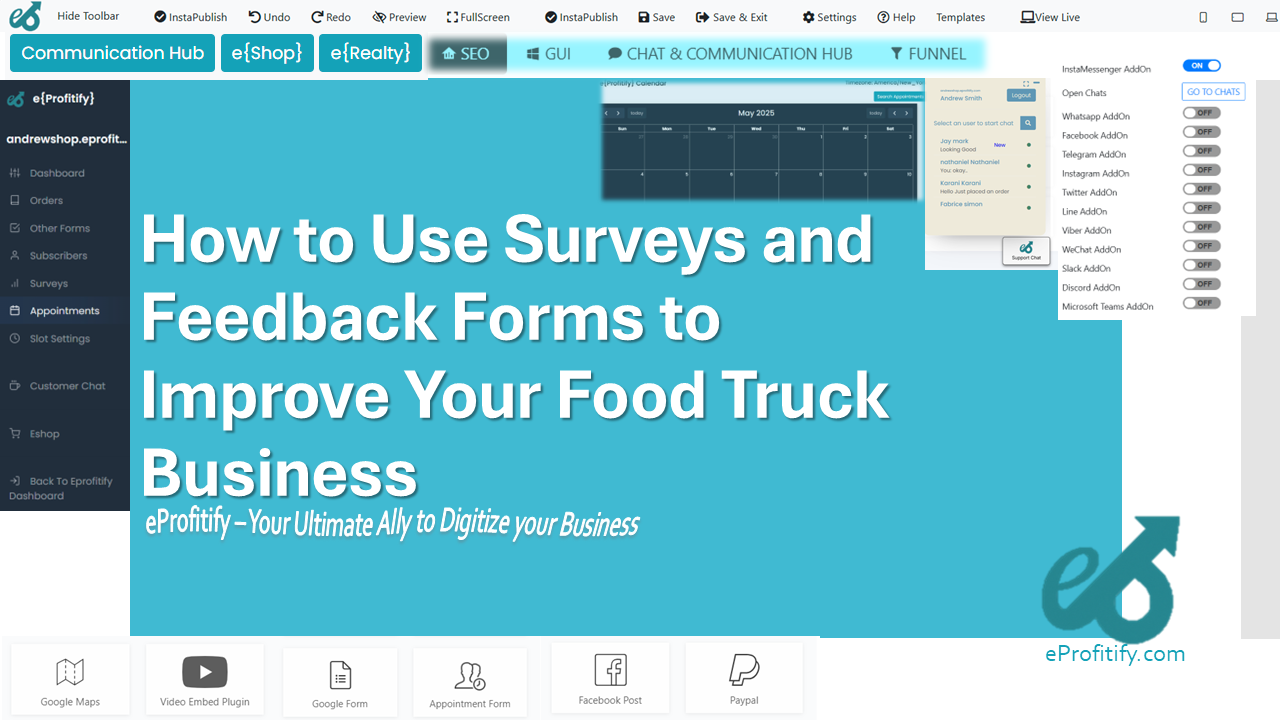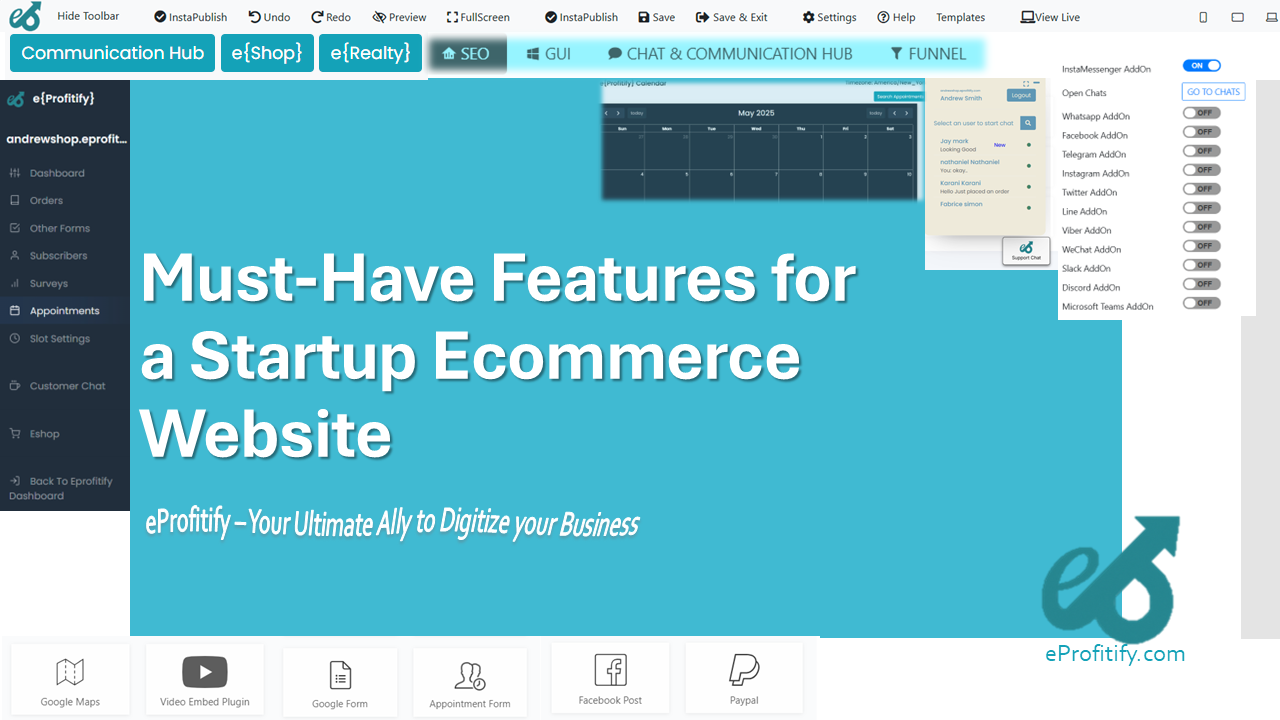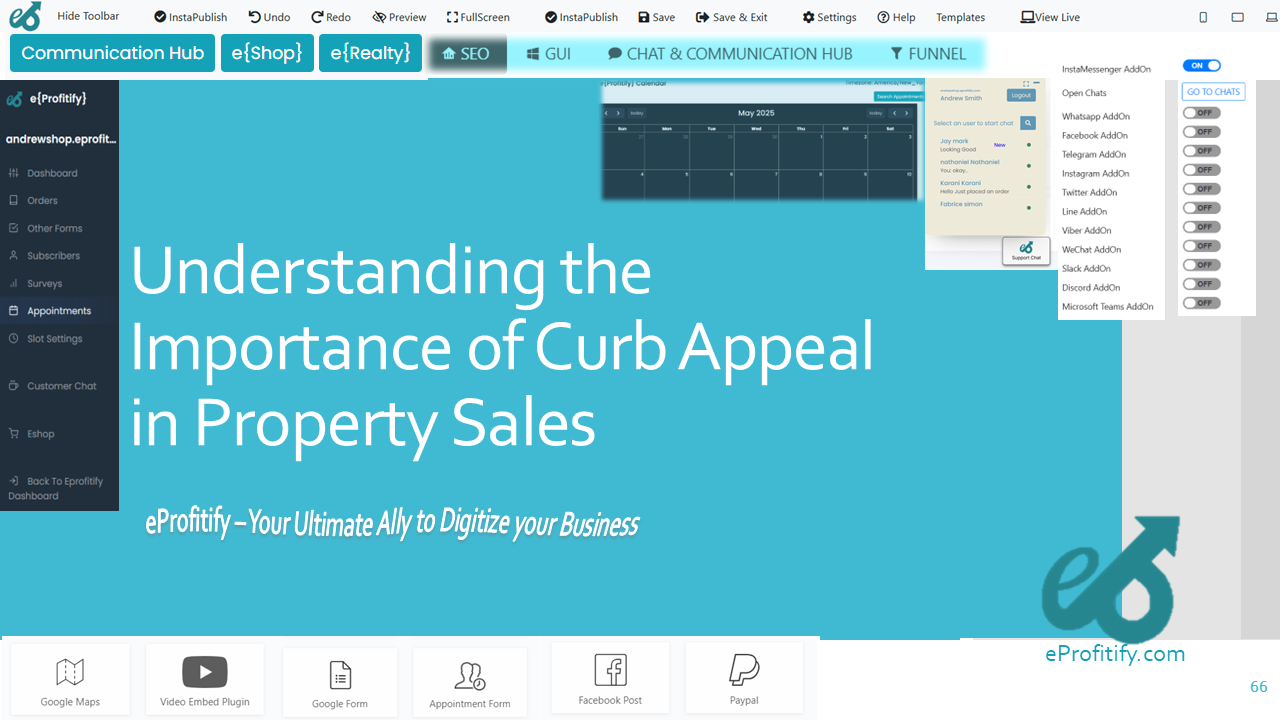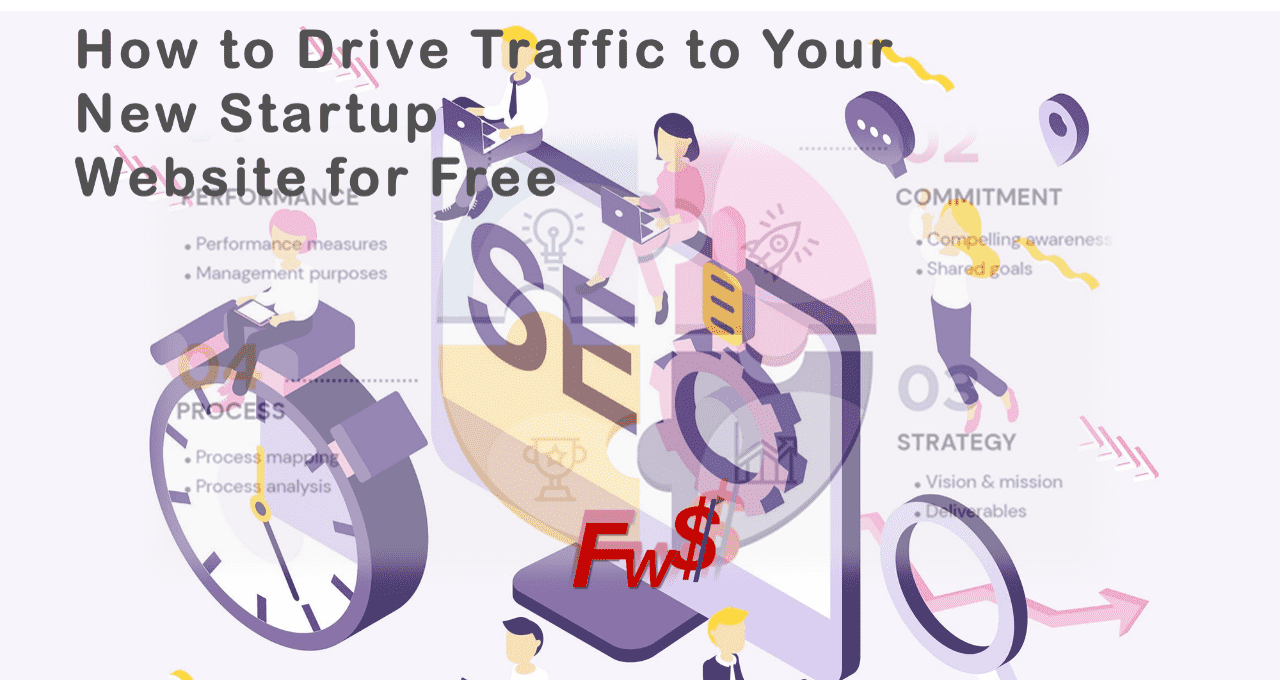Secure your website automatically with eProfitify SSL
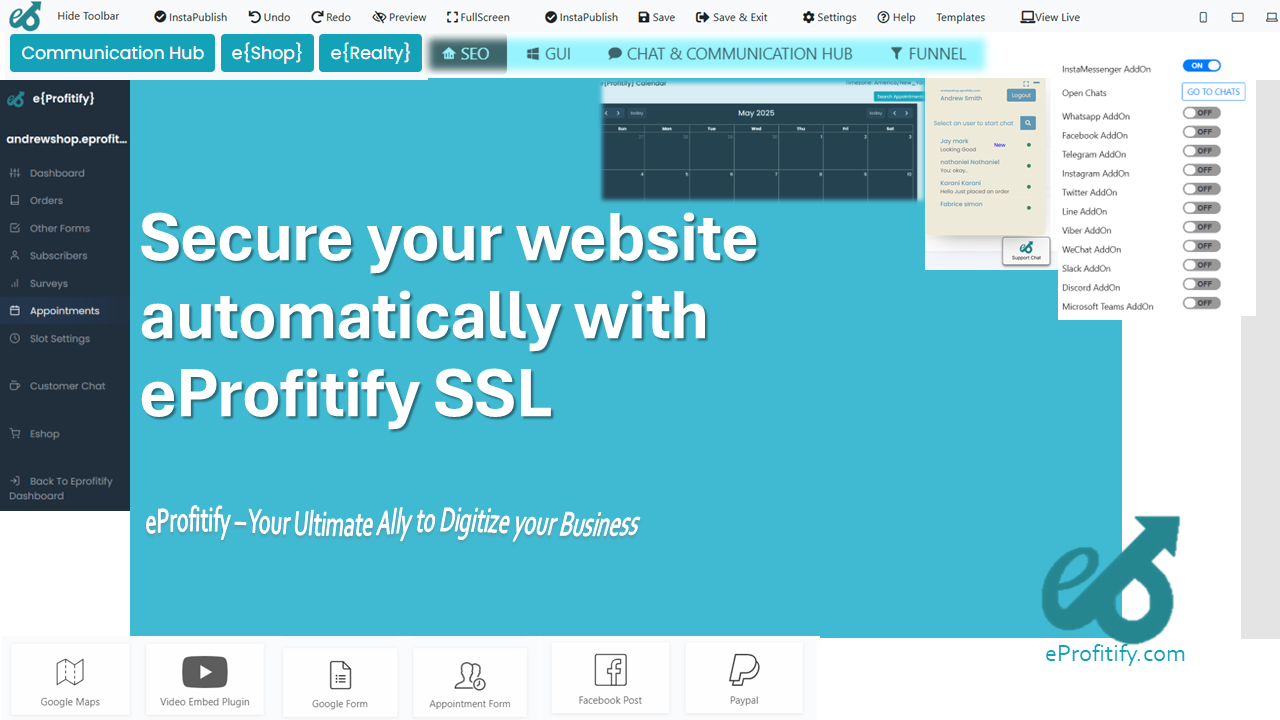
Schedule a LIVE Zoom call with an eProfitify Expert.
Secure Your Website Automatically with eProfitify SSL: A Comprehensive Guide
In today’s digital-first world, website security is no longer optional—it’s a necessity. With cyberattacks increasing in frequency and complexity, businesses must prioritize safeguarding their online presence to protect sensitive data, build customer trust, and avoid costly penalties. One of the most effective ways to secure a website is through SSL (Secure Sockets Layer) encryption, a technology that encrypts data transmitted between a user’s browser and the server. While SSL is widely recognized as essential, implementing and managing it can be challenging for businesses without technical expertise. This is where eProfitify, a leading website publishing and management platform, steps in. With its automated SSL integration and a suite of innovative tools, eProfitify simplifies website security while empowering businesses to grow.
The Critical Role of SSL in Website Security
SSL certificates are digital protocols that create an encrypted link between a web server and a browser. This encryption ensures that data such as login credentials, payment details, and personal information remain private and secure. When a website has an SSL certificate, it displays a padlock icon and uses HTTPS (HyperText Transfer Protocol Secure) in the URL, signaling to visitors that the site is trustworthy.
Statistics Highlighting the Need for SSL
- Cybercrime Costs: Cyberattacks are projected to cost the global economy $10.5 trillion annually by 2025, up from $3 trillion in 2015 (Cybersecurity Ventures).
- Data Breaches: In 2023, the average cost of a data breach reached $4.45 million, a 15% increase over three years (IBM Security).
- Consumer Trust: 85% of users abandon a website if it’s not secured with HTTPS (HubSpot Research).
- SEO Impact: Google prioritizes HTTPS websites in search rankings, with 95% of pages on Google’s first results page using SSL (Backlinko).
These numbers underscore why SSL is non-negotiable for modern businesses. Without it, companies risk losing customer trust, facing legal repercussions, and damaging their brand reputation.
eProfitify SSL: Automated Security Made Simple
eProfitify eliminates the complexity of SSL implementation by offering automated, one-click SSL activation for all websites hosted on its platform. Unlike traditional methods that require manual certificate installation, renewal, and configuration, eProfitify handles everything behind the scenes. Here’s how it works:
- Instant Activation: Users can enable SSL with a single click in their eProfitify dashboard. The platform partners with trusted certificate authorities (CAs) to provide validated certificates instantly.
- Auto-Renewal: SSL certificates expire periodically, but eProfitify automatically renews them, ensuring uninterrupted protection.
- Universal Compatibility: Whether you’re running a blog, eCommerce store, or corporate site, eProfitify’s SSL works seamlessly across all website types.
- HTTPS Redirects: The platform automatically redirects HTTP traffic to HTTPS, preventing mixed-content issues that could weaken security.
By automating SSL, eProfitify saves businesses time, reduces human error, and ensures compliance with industry standards like GDPR and PCI-DSS.
Beyond SSL: eProfitify as an All-in-One Website Management Powerhouse
While SSL is a cornerstone of security, eProfitify distinguishes itself as a holistic platform designed to streamline every aspect of online business operations. Let’s explore its standout features:
1. Instant Messaging and Live Chat
Customer engagement is key to conversion, and eProfitify’s built-in messaging tools allow businesses to connect with visitors in real time. Features include:
- Automated chatbots for 24/7 support.
- Customizable chat widgets aligned with brand aesthetics.
- Integration with CRM to track customer interactions.
2. Appointment Management System
For service-based businesses like clinics, salons, or consultants, eProfitify’s scheduling tool simplifies bookings:
- Clients can self-book appointments via a user-friendly calendar.
- Automated reminders reduce no-shows by 30% (eProfitify internal data).
- Syncs with Google Calendar and Outlook.
3. Ecommerce Solutions
eProfitify empowers entrepreneurs to launch online stores effortlessly:
- Secure payment gateways (Stripe, PayPal) with PCI-DSS compliance.
- Inventory management and order tracking.
- AI-driven product recommendations to boost sales.
4. CRM Integration
The platform’s Customer Relationship Management (CRM) system centralizes client data, enabling businesses to:
- Track leads and customer interactions.
- Segment audiences for targeted marketing campaigns.
- Analyze sales pipelines with visual dashboards.
5. SEO and Analytics
eProfitify includes tools to enhance visibility and measure performance:
- Keyword optimization suggestions.
- Real-time traffic and conversion analytics.
- Competitor analysis reports.
6. Multi-User Collaboration
Teams can collaborate efficiently with role-based access controls, task assignments, and version history tracking.
Why eProfitify Stands Out in the Market
The platform’s combination of automated security and advanced business tools makes it a leader in website management. Unlike standalone SSL providers or disjointed toolkits, eProfitify offers an integrated ecosystem where security, functionality, and user experience coexist seamlessly. For instance:
- A retail business can secure its checkout process with SSL while using the CRM to personalize marketing offers.
- A healthcare provider can encrypt patient data while streamlining appointments and telehealth consultations.
Statistics Reinforcing eProfitify’s Impact
- Businesses using eProfitify report a 40% reduction in time spent on site management tasks.
- Clients leveraging its ecommerce tools see an average 25% increase in revenue within six months.
- Over 50,000 websites globally trust eProfitify for SSL and publishing needs.
Conclusion: Future-Proof Your Business with eProfitify
In an era where cyber threats loom large and consumer expectations are higher than ever, eProfitify offers more than just SSL—it provides a robust foundation for secure, scalable growth. By automating critical security processes and bundling essential tools like CRM, eCommerce, and appointment management, eProfitify empowers businesses to focus on innovation rather than infrastructure.
Whether you’re a small business owner, a freelancer, or an enterprise, eProfitify’s user-friendly interface and powerful features ensure your website isn’t just secure—it’s a dynamic asset driving your success. Don’t wait for a breach to take action. Secure your website automatically with eProfitify SSL and unlock the full potential of your online presence today.
Word Count: 998
[Statistics sourced from Cybersecurity Ventures, IBM Security, HubSpot Research, Backlinko, and eProfitify internal data]



